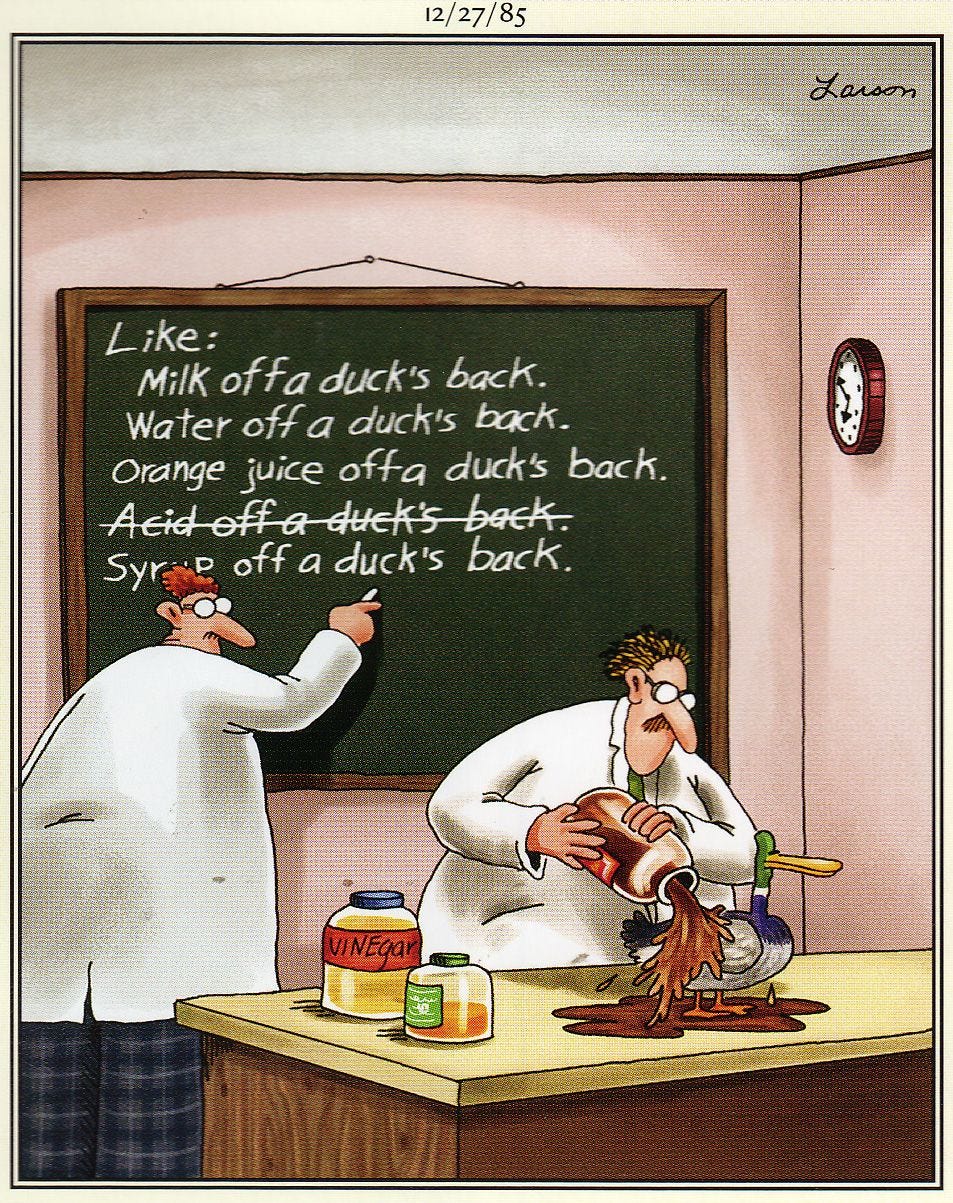All That's "New" Isn't Always New: 6 Pieces of Timeless Marketing Advice You Need to Know From Claude Hopkins
Standing the Test of Time: Claude Hopkins' Core Marketing Truths in Scientific Advertising
Original ideas in marketing are rare.
This is a lesson I’ve learned repeatedly.
A recent re-read of Claude Hopkins’ Scientific Advertising made this clear to me yet again.
Below I’ll share six of my favorite quotes from his essential book, but first I’m going to step up onto my soapbox about our fixation on “new.”
I’ve been reading about self-improvement and habit formation over the past year. Self-help books about happiness or habit formation contain advice that was circulating hundreds or thousands of years ago.
The fundamental advice that happiness comes from within or the idea that we are what we think go back to the philosophy of the Stoics. There’s a reason people still read Marcus Aurelias’ Meditations (well worth it).
Related to marketing and my work, my favorite form of procrastination is accumulating MOAHR RESEARCH. With the exception of scientific improvements that are beginning to allow us to see how the brain works, if you’ve picked up a book or course about writing, copywriting, inbound marketing, or content marketing that’s the only one you need to get started.
You don’t need to read another book. The advice will be similar, if not identical, and you’ll know all you need to know about the basics. Master the basics, THEN you can start to get fancy.
Another new book on any of those topics, while it might be excellent, is more than likely to echo what you already know.
When I first got sucked into the dark side of marketing, it was all new to me.
Everything seemed amazing.
I moved from an editing role to a community manager to an inbound marketing role (all within the same professional industry association) just when inbound marketing and Seth Godin’s concept of permission marketing were hitting the marketing industry.
I remember reading Inbound Marketing by Brian Halligan and Dharmesh Shah, co-founders of HubSpot, and thinking, “This shit is incredible! And so new!”
Weeelllllll, maybe not so much – at least on the new side of things; I think inbound/content marketing is incredible (and HubSpot has grown to be one of the largest marketing platforms on the market). But Michelin Tires was doing content marketing over a century ago (yep, those Michelin restaurant ratings originated from a tire company’s marketing campaign).
While email and the Internet are new ways to deliver marketing materials, the fundamentals of marketing – knowing your customer (personas), clearly explaining your value and asking for the sale (calls to action), providing good service (“delighting customers” is the phrase Halligan and Shah used), etc. – haven’t changed.
That’s not to denigrate HubSpot OR inbound marketing. I was part of a small agency that became a HubSpot Platinum Partner. I absolutely believe in the principles of inbound and content marketing (and I loved working with HubSpot, the company and platform).
They just ain’t new.
New doesn’t mean better – especially when “new” is saying the same old thing with different words.
One quick note on Scientific Advertising. It was written in 1923. If you choose to, you can fixate on the dated language of the time – housewives, salesmen, etc. – or ignore the language as a relic of the times and focus on the ideas.
Without further ado, timeless advice from Claude Hopkins.
We Do This To Make Money
“The Only Purpose of advertising is to make sales. It is profitable or unprofitable according to its actual sales.”
It’s easy to get lost in all of the glorious and wonderful statistics available to marketers.
Don’t do that.
Marketing is about making money; anything else is ego.
Many marketers focus on everything except sales. While statistics can provide indicators that your efforts are working, the bottom line is the bottom line: do your words move people to buy or buy more of your product?
You still need to be patient! You aren’t going to start writing blogs, producing videos, infographics, or whatever else and then immediately garner huge sales.
Well, it’s possible, it’s just not likely.
ALWAYS remember that marketing is about sales (even branding).
Also, Sales, don’t get the big head, sometimes you people just suck at your jobs and like to blame marketing for “poor leads.”
Here’s the good thing about a solid content marketing strategy informed by statistics – you’ll be able to tell who isn’t holding up their side of the bargain (sales or marketing). Hopefully, each side will work together to reinforce each other’s strengths.
Hopkins had another quote similar to the one I lead with about ad writers, “they forget they are salesmen and try to be performers. Instead of sales they seek applause.”
No One Likes to Be Sold to
“People can be coaxed but not driven. Whatever they do they do to please themselves. Many fewer mistakes would be made in advertising if those facts were never forgotten.”
People don’t like to be sold to. Why we still have “used car” salespeople in every industry is baffling.
Economists assume people make rational buying decisions.
Wrong.
We decide to buy based on emotion, then look for facts to validate that emotional desire.
At heart, marketing is manipulation. While that feels . . . dirty to write, it’s also true.
We are using techniques and words that our little rat brains like to respond to.
The last few years has seen an upsurge in applying story in marketing. We are hardwired to respond to story.
If you’ve ever been intrigued enough by a question asked at the beginning of a blog post or watched a horrible movie through to the end because you needed to see how it ends; that’s your rat brain trying to close the open loop of the story.
While manipulative, I do also think intent matters. If you are truly trying to help your customers with your content marketing by sharing information that improves their lives somehow, marketing can be a positive force.
This does often leave me feeling a little queasy, so I try not to think about it too much and focus on creating useful content.
Headlines Are Crucial
“The writing of headlines is one of the greatest journalistic arts. They will either conceal or reveal an interest.”
Writing headlines that work is as hard as they are essential.
Headlines that promise something the target is interested in are gold. Direct and useful is almost always better than “cute.”
Humor and cute are hard to get right. I know from personal experience that every time I tried to be witty in a newsletter subject line for AIIM, open rates would drop a few percentage points.
Readers would always hit me on the nose with a rolled-up newspaper: Bad Duhon! Bad!
Back to simple and direct I would go; up the open rates and clicks would go.
Experiment, but straightforward language is the way to begin.
Master headlines (and subject lines for email) or the rest doesn’t matter.
Human Nature Is Constant
“Human nature is perpetual. In most respects, it is the same today as in the time of Caesar.”
Given we’re only a century or so after Hopkins, I’m confident in saying that this is still true.
If you want to get philosophical, we’ve been hashing over the same ground – good versus evil, heros and villains, personal responsibility, how to live a good life, and everything else that occupies the self-help aisle in your local bookstore for as long as the written word has been with us.
After all, the themes of the Epic of Gilgamesh, the oldest surviving work of literature at 4,000 years (give or take a decade or century), are the same hero journey Luke took to learn to use The Force; Douglas to Romance the Stone, or Captain Marvel to save the multiverse.
Also, Gilgamesh is a fun, crazy read.
Details and Specifics Matter
“Platitudes and Generalities roll off of human understanding like water off of a duck’s back.”
I’ve been an editor or in marketing in the enterprise content management (content services) and intelligent document processing IT spaces my entire career (1994 to now).
I remain baffled at how shit most of the marketing is.
These technologies are remarkable. They work. They deliver solid ROI fairly quickly – sometimes months rather than years.
And still I read press releases that I finish and think “I have no idea what they hell this company/product does.”
Best this. First that. Best of breed the other.
And never forget “world class.”
Yawn.
No. One. Cares.
Share specifics. Use numbers (real numbers, don’t be that assmuch that makes up statistics). Tell your potential customer how you will make their life better.
Your marketing will immediately improve if you do that – while taking out all the garbage words like “leading” and “best” and you get the idea.
As Douglas Adams pointed out, be careful what you pour on other folk’s backs though!

An Ounce of Prevention is Worth a Pound of Cure - But No One Cares
“Prevention is not a popular subject however much it should be. People will do much to cure trouble, but people in general will do little to prevent it.”
The updated version of this could be, “We don’t have the time to do it right, but we do have the time to do it twice.”
In IT, especially, companies are continually purchasing the wrong product and/or misapplying it because they didn’t think through their true business needs. I’m sure all of us can think of a time when we rushed a deadline, got it wrong, then had to take a step back and do it over.
For marketing, the implication is obvious. Unless your target audience IS a group of “Always be prepared” Boy Scouts, they’ve probably already screwed up whatever they’re trying to do once or twice. Your messaging should reflect this quirk of human nature.
Fads Fade, Classics Endure
While new marketing trends and tools arise constantly, Claude Hopkins' Scientific Advertising reminds us that core principles stand the test of time. Human nature and behavior remain largely consistent, so foundational tactics like understanding customers, crafting persuasive messaging, and focusing relentlessly on sales hold as true today as a century ago.
Rather than get distracted by the newest fad, marketers should focus on mastering the basics.
Of course, context and how to use “old school” principals in marketing and sales will change. What won’t change is that when you understand the history, you can cut through hype to apply proven wisdom to modern challenges.
Need help creating your content (or inbound if you prefer) marketing strategy and/or content? Drop me a line at duhonius@gmail.com, reply in the comments, or give me a call (or text, text is better, what with all the phone spam) at 301–275–7496.






